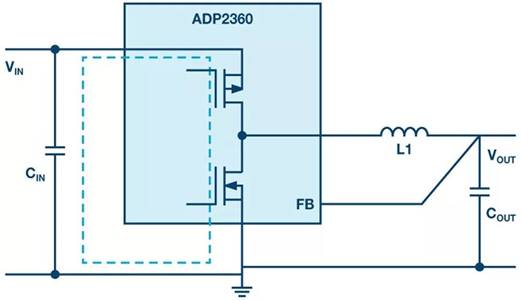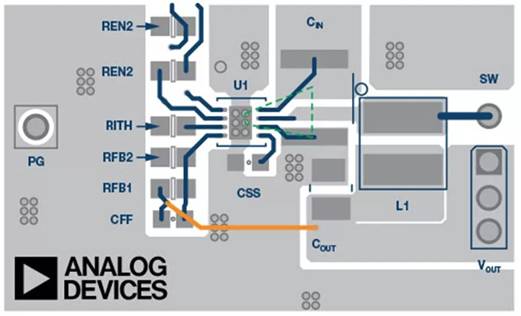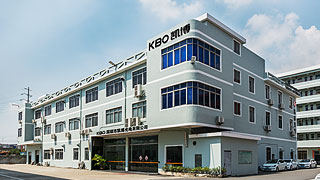How should the inductor be placed on the power PCB?
Switching regulators for voltage conversion usually use inductors to temporarily store energy. These inductors are usually very large in size and must be arranged in the printed circuit board (PCB) layout of switching regulators. This task is not difficult, because the current passing through the inductor may change, but not instantaneously. It may be continuous and usually relatively slow.
The switching regulator switches the current back and forth between two different paths. This switching is very fast, and the specific switching speed depends on the duration of the switching edge. The route through which switching current flows is called thermal loop or AC current path, which conducts current in one switching state and does not conduct current in another switching state. In PCB layout, the thermal loop area shall be small and the path shall be short to minimize parasitic inductance in these routes. Parasitic wiring inductance will generate unwanted voltage offset and cause electromagnetic interference (EMI).

Figure 1. Switching regulator for step-down switching (with key thermal circuit as shown by dotted line)
Figure 1 shows a step-down regulator, in which the key thermal circuit is shown as a dotted line. It can be seen that coil L1 is not part of the thermal loop. Therefore, it can be assumed that the placement position of the inductor is not important. It is correct to locate the inductor outside the thermal circuit - therefore, in the first example, the placement is secondary, but some rules should also be followed:
It is not allowed to lay sensitive control wiring under the inductance (not on or below the PCB surface), in the inner layer or on the back of the PCB. Affected by the current flow, the coil will generate a magnetic field, which will affect the weak signal in the signal path. In switching regulators, a critical signal path is the feedback path, which connects the output voltage to the switching regulator IC or resistance divider.
The actual coil has both capacitive and inductive effects. The first coil winding is directly connected to the switching node of the step-down switching regulator, as shown in Figure 1. As a result, the voltage in the coil changes as strongly and rapidly as the voltage at the switching node. Because the switching time in the circuit is very short and the input voltage is very high, considerable coupling effects will occur on other paths on the PCB. Therefore, sensitive wiring should be far away from the coil.

Figure 2. Example circuit of ADP2360 buck converter with coil placement
Figure 2 shows an example layout of ADP2360. In this figure, the important heat return path in Figure 1 is green. It can be seen from the figure that the yellow feedback path has a certain distance from offline loop L1. It is located on the inner layer of the PCB.
Some circuit designers do not even want any copper layer in the PCB under the coil. For example, they provide a notch below the inductance, even in the ground plane layer. The objective is to prevent eddy currents in the ground plane below the coil due to the coil magnetic field. This method is not wrong, but it is also argued that the grounding plane should be consistent and should not be interrupted:
• The ground plane used for shielding works best without interruption.
• The more copper in PCB, the better heat dissipation.
• Even if eddy currents are generated, these currents can only flow locally, which will only cause small losses, and will hardly affect the function of the grounding plane.
Although the coil of switching voltage regulator is not part of the critical thermal loop, it is wise not to lay sensitive control wiring below or near the coil. Various planes on the PCB, such as the ground plane or VDD plane (power supply voltage), can be constructed continuously without notch.






